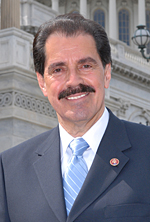

ADVERTISEMENT
- Rozovsky wins prestigious NSF Early Career Award
- UD students meet alumni, experience 'closing bell' at NYSE
- Newark Police seek assistance in identifying suspects in robbery
- Rivlin says bipartisan budget action, stronger budget rules key to reversing debt
- Stink bugs shouldn't pose problem until late summer
- Gao to honor Placido Domingo in Washington performance
- Adopt-A-Highway project keeps Lewes road clean
- WVUD's Radiothon fundraiser runs April 1-10
- W.D. Snodgrass Symposium to honor Pulitzer winner
- New guide helps cancer patients manage symptoms
- UD in the News, March 25, 2011
- For the Record, March 25, 2011
- Public opinion expert discusses world views of U.S. in Global Agenda series
- Congressional delegation, dean laud Center for Community Research and Service program
- Center for Political Communication sets symposium on politics, entertainment
- Students work to raise funds, awareness of domestic violence
- Equestrian team wins regional championship in Western riding
- Markell, Harker stress importance of agriculture to Delaware's economy
- Carol A. Ammon MBA Case Competition winners announced
- Prof presents blood-clotting studies at Gordon Research Conference
- Sexual Assault Awareness Month events, programs announced
- Stay connected with Sea Grant, CEOE e-newsletter
- A message to UD regarding the tragedy in Japan
- More News >>
- March 31-May 14: REP stages Neil Simon's 'The Good Doctor'
- April 2: Newark plans annual 'wine and dine'
- April 5: Expert perspective on U.S. health care
- April 5: Comedian Ace Guillen to visit Scrounge
- April 6, May 4: School of Nursing sponsors research lecture series
- April 6-May 4: Confucius Institute presents Chinese Film Series on Wednesdays
- April 6: IPCC's Pachauri to discuss sustainable development in DENIN Dialogue Series
- April 7: 'WVUDstock' radiothon concert announced
- April 8: English Language Institute presents 'Arts in Translation'
- April 9: Green and Healthy Living Expo planned at The Bob
- April 9: Center for Political Communication to host Onion editor
- April 10: Alumni Easter Egg-stravaganza planned
- April 11: CDS session to focus on visual assistive technologies
- April 12: T.J. Stiles to speak at UDLA annual dinner
- April 15, 16: Annual UD push lawnmower tune-up scheduled
- April 15, 16: Master Players series presents iMusic 4, China Magpie
- April 15, 16: Delaware Symphony, UD chorus to perform Mahler work
- April 18: Former NFL Coach Bill Cowher featured in UD Speaks
- April 21-24: Sesame Street Live brings Elmo and friends to The Bob
- April 30: Save the date for Ag Day 2011 at UD
- April 30: Symposium to consider 'Frontiers at the Chemistry-Biology Interface'
- April 30-May 1: Relay for Life set at Delaware Field House
- May 4: Delaware Membrane Protein Symposium announced
- May 5: Northwestern University's Leon Keer to deliver Kerr lecture
- May 7: Women's volleyball team to host second annual Spring Fling
- Through May 3: SPPA announces speakers for 10th annual lecture series
- Through May 4: Global Agenda sees U.S. through others' eyes; World Bank president to speak
- Through May 4: 'Research on Race, Ethnicity, Culture' topic of series
- Through May 9: Black American Studies announces lecture series
- Through May 11: 'Challenges in Jewish Culture' lecture series announced
- Through May 11: Area Studies research featured in speaker series
- Through June 5: 'Andy Warhol: Behind the Camera' on view in Old College Gallery
- Through July 15: 'Bodyscapes' on view at Mechanical Hall Gallery
- More What's Happening >>
- UD calendar >>
- Middle States evaluation team on campus April 5
- Phipps named HR Liaison of the Quarter
- Senior wins iPad for participating in assessment study
- April 19: Procurement Services schedules information sessions
- UD Bookstore announces spring break hours
- HealthyU Wellness Program encourages employees to 'Step into Spring'
- April 8-29: Faculty roundtable series considers student engagement
- GRE is changing; learn more at April 15 info session
- April 30: UD Evening with Blue Rocks set for employees
- Morris Library to be open 24/7 during final exams
- More Campus FYI >>
3:50 p.m., Dec. 17, 2009----A bill introduced in Congress yesterday by U.S. Rep. Jose E. Serrano (D-New York) would provide funding to the Department of Energy and U.S. Postal Service to convert existing mail trucks and manufacture new ones to use vehicle-to-grid, or V2G, technology, which was developed at the University of Delaware.
Through V2G, power generated by electric drive vehicles can be returned to the nation's electric grid.
The bill is designed “to further the national deployment of electric drive vehicles” and “to strengthen and enhance the national power grid through the integration of such vehicles.”
It provides for the manufacture, testing and delivery of at least 20,000 electric drive vehicles for use by the Postal Service.
A primary goal of the bill is to stimulate private industry development of electric drive vehicles, and advanced powertrains and battery packs, and to develop an infrastructure for electric vehicle battery recharging.
The V2G concept originated at the University of Delaware, with a 1997 article by Willett Kempton, professor in the College of Earth, Ocean, and Environment and director of the Center for Carbon-free Power Integration, and Steven E. Letendre, associate professor of management and environmental studies at Green Mountain College in Vermont.
Since, Kempton said, the V2G concept has been expanded and made into working systems, with UD leading the intellectual, design and policy effort, with funding, vehicle systems and power system integration by multiple partners.
This is an expanding area of research and development for the University, with about 18 faculty and students working on V2G projects in the College of Earth, Ocean, and Environment, the departments of Mechanical Engineering and Electrical and Computer Engineering in the College of Engineering, and the Department of Computer and Information Sciences in the College of Arts and Sciences. This work has been funded by the Delaware Green Energy Fund, Google, Pepco Holdings, Inc., and the U.S. Department of Energy.
Kempton said many companies and analysts are working on V2G now, adding that “forward-thinking and savvy legislators are incorporating it into law and incentives to move this U.S.-developed technology to market faster than our economic competitors do.”
UD is part of the Mid-Atlantic Grid Interactive Cars Consortium, which is working to develop, test and demonstrate V2G technology.
The state of Delaware has advanced corporate and state policies on V2G. On Jan. 9, 2009, the City of Newark became the first electric utility in the United States to approve the use of an electric vehicle to store and provide power for the local electric grid. Delmarva Power did so shortly afterwards, and PJM Interconnect is dispatching the vehicles in Delaware to provide real-time grid services.
A Sept. 21 event marked the launch of the first vehicle-to-grid (V2G) electric cars made in Delaware and the signing of Senate Bill 153 by Gov. Jack A. Markell, which rewards owners of V2G technology for plugging in. This is the first law of its kind in the nation and sets a model for other states, Kempton said.


